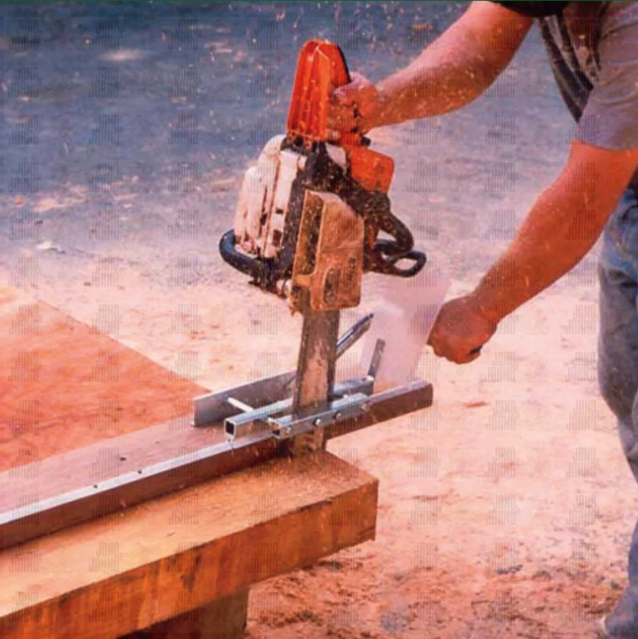Operating a chainsaw is no small task—it’s powerful, potentially hazardous, and demands regular upkeep to stay safe and effective. Neglecting maintenance can lead to serious consequences, like the saw misbehaving at a critical moment, causing branches to snap unpredictably or even jamming into the wood. Ensuring your chainsaw runs smoothly is paramount to both your safety and the quality of your work.
When your chainsaw starts cutting crooked, it’s a sign that something isn’t quite right. Whether it’s due to a dull chain, incorrect chain tension, or wear and tear on other components, addressing these issues is essential for smooth operation. Let’s explore the common reasons behind a crooked cut and how to fix them.
A crooked cut can result from various factors, ranging from user error to mechanical faults. One common culprit is a dull or uneven chain—sharpness is key to precision cutting. Another issue could be the chain tension being either too tight or too loose, which can lead to poor performance or even injury. Additionally, wear and tear on the bar or damaged cutting teeth can significantly affect the saw’s ability to cut straight.
A dull chain is a major contributor to crooked cuts. Over time, the cutting teeth lose their edge, making the chain less efficient. To prevent this, regularly check and maintain the sharpness of your chain, ensuring all teeth are at the same level. Investing in high-quality chains, like those from Stihl, can help reduce the frequency of sharpening.
Incorrect chain tension can also lead to crooked cuts. If the chain is too tight, it can cause excessive stress on the saw’s components, while a loose chain might derail entirely. Both scenarios pose risks to your safety and the equipment’s longevity. Make sure to adjust the tension correctly using the adjustment screw on the guide bar.
A worn-out bar or damaged cutting teeth can severely impact the chainsaw’s cutting ability. The bar serves as the foundation for the chain, and if it’s worn or bent, it will affect the entire cutting mechanism. Similarly, chipped or broken teeth need immediate attention to ensure precise cuts.
Sharpening your chainsaw chain is a skill that improves with practice. Here’s a step-by-step guide to help you do it effectively:
Start by cleaning the chain thoroughly. Grease, dirt, and debris can interfere with the sharpening process and make it harder to hold the chain securely. Use a mixture of ammonia and water to dissolve any stubborn residues, then rinse and dry the chain before proceeding.
Ensure the chain is properly tensioned. It should be snug against the bar but not overly tight. Adjust the tension using the screw located on the side of the guide bar. A well-adjusted chain ensures smooth operation and prevents derailment.
Begin sharpening with the shortest tooth on the chain. This ensures uniformity in length across all teeth. Once the shortest tooth is filed down to the desired size, you can adjust the others accordingly.
Hold the file at the correct angle, typically around 25-30 degrees, depending on the saw model. File each tooth in a smooth motion, applying gentle pressure. After five to six strokes, move to the next tooth.
Flip the saw around and repeat the filing process on the opposite side of the chain. Ensure the tops of the teeth are approximately the same length for balanced cutting.
Finally, inspect the depth gauges to ensure they’re lower than the adjacent cutters. If they protrude above the chain, file them down slightly until they sit below the cutter height. This adjustment prevents the saw from catching or cutting unevenly.
A chainsaw that cuts erratically poses significant risks to you and anyone nearby. Using a chainsaw sharpener is an effective way to ensure precision and safety. Remember, maintaining your equipment goes beyond just sharpening—it includes checking other components like the bar and depth gauges.
Jono & Johno is your one-stop-shop for all things chainsaw-related. From high-quality chains and safety gear to professional-grade tools, we’ve got everything you need. Explore our inventory online or reach out with any questions—we’re here to help!
Fishing Series,Fishing Boots Wading,Fishing Boots With Velcro,Fishing Rain Watertight Rubber Huaian Boshi Sports Products Co.,Ltd , https://www.cnboshisports.com
Common Causes of Crooked Cuts
Dull or Uneven Chain
Improper Chain Tension
Worn-Out Bar or Damaged Teeth
How to Sharpen Your Chainsaw Chain
Step 1: Clean the Chain
Step 2: Adjust Chain Tension
Step 3: Start with the Shortest Tooth
Step 4: File at the Correct Angle
Step 5: File the Opposite Side
Step 6: Check Depth Gauges
Shop for Chainsaw Sharpeners at Jono & Johno